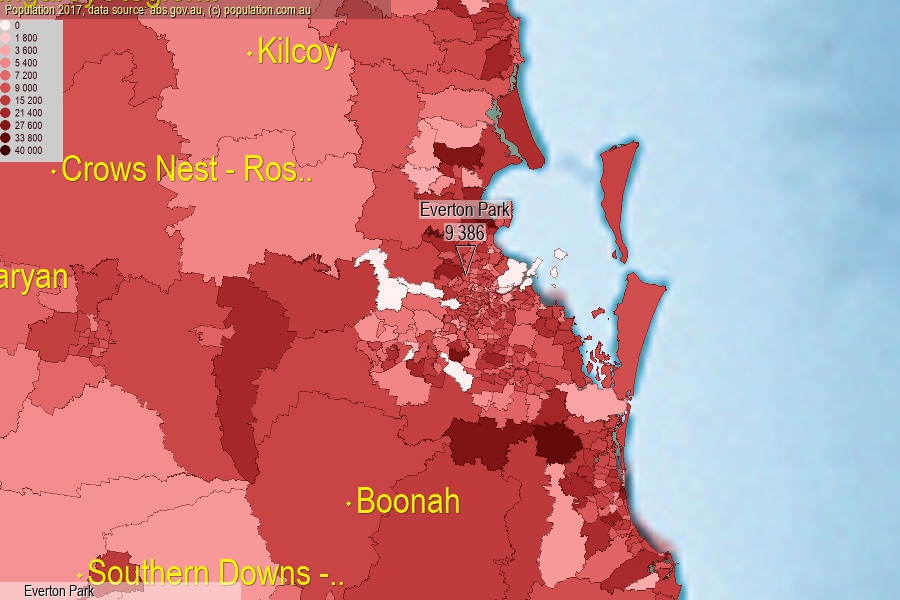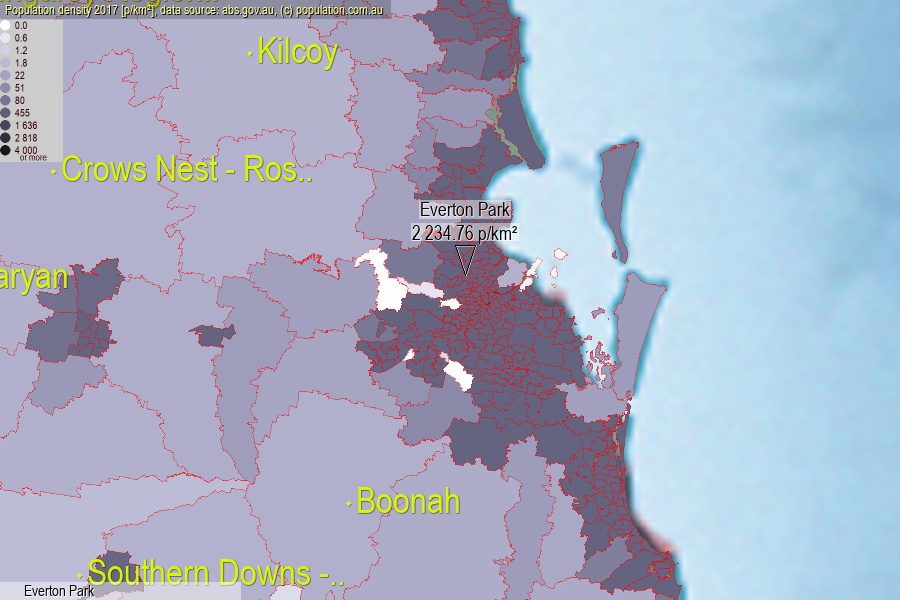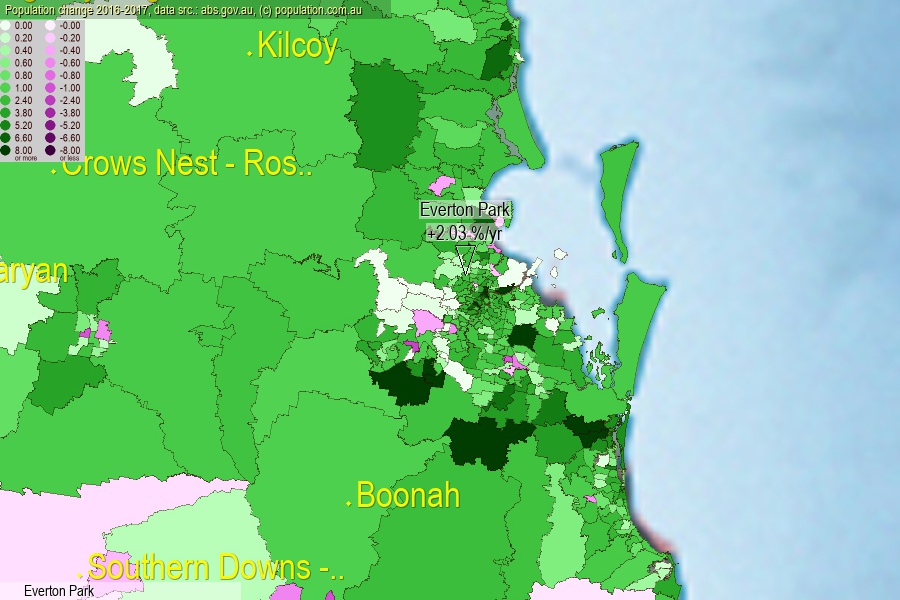 population.com.au
population.com.auLast official estimated population of Everton Park (as Statistical Area Level 2) was 9 386 people (on 2017-06-30)[2]. This was 0.04% of total Australian population and 0.188% of QLD population. Area of Everton Park is 4.20 km², in this year population density was 2 234.76 p/km² . If population growth rate would be same as in period 2016-2017 (+2.03%/yr), Everton Park population in 2025 would be 11 026. [0]



Click to enlarge. Everton Park is located in the center of the images.
Population [people], population density [p./km²] and population change [%/year] [2]
View borders » (new window) [4]
[1991-1992] -0.92 %/Yr.
[1992-1993] -0.82 %/Yr.
[1993-1994] -0.88 %/Yr.
[1994-1995] +0.36 %/Yr.
[1995-1996] +0.14 %/Yr.
[1996-1997] -0.57 %/Yr.
[1997-1998] -0.35 %/Yr.
[1998-1999] +0.63 %/Yr.
[1999-2000] -0.14 %/Yr.
[2000-2001] +0.74 %/Yr.
[2001-2002] -0.28 %/Yr.
[2002-2003] -0.32 %/Yr.
[2003-2004] -0.33 %/Yr.
[2004-2005] +0.72 %/Yr.
[2005-2006] +0.80 %/Yr.
[2006-2007] +1.73 %/Yr.
[2007-2008] +1.40 %/Yr.
[2008-2009] +3.12 %/Yr.
[2009-2010] +1.58 %/Yr.
[2010-2011] +0.82 %/Yr.
[2011-2012] +1.75 %/Yr.
[2012-2013] +1.65 %/Yr.
[2013-2014] +1.26 %/Yr.
[2014-2015] +1.03 %/Yr.
[2015-2016] +0.87 %/Yr.
[2016-2017] +2.03 %/Yr.
[0] Calculated with linear interpolation from officially estimated population
[1] Read more about SA2 and Australian Statistical Geography Standard (ASGS) on abs.gov.au
[2] Population data from Australian Bureau of Statistics (Population and density: 2017; change: 2016-2017)
[3] Digital Boundaries: Australian Statistical Geography Standard (ASGS) 2016.
[4] Border coordinates are simplifyed using Ramer-Douglas-Peucker algorithm.